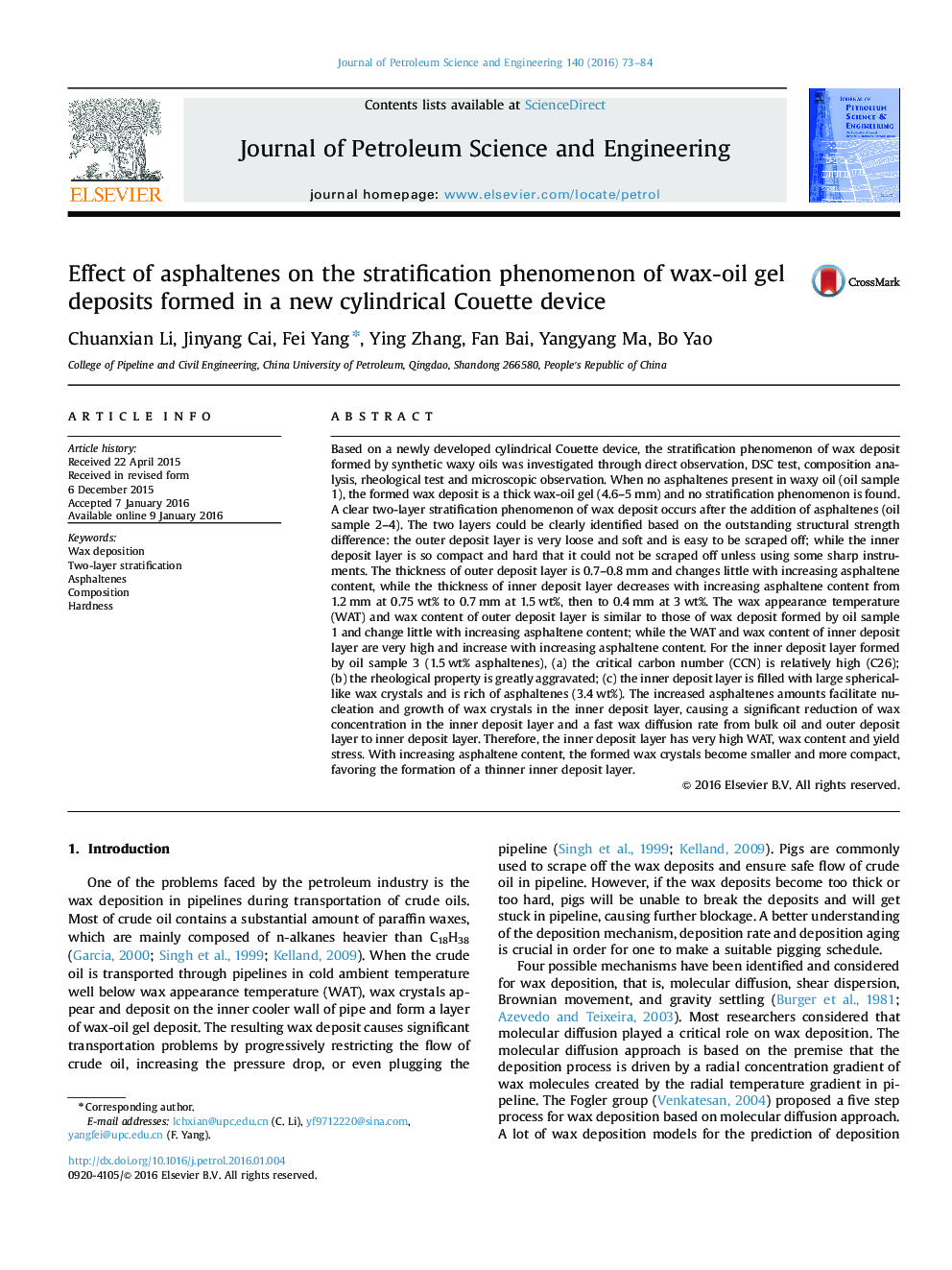| کد مقاله | کد نشریه | سال انتشار | مقاله انگلیسی | نسخه تمام متن |
|---|---|---|---|---|
| 1754597 | 1522801 | 2016 | 12 صفحه PDF | دانلود رایگان |
• Asphaltenes addition triggers the formation of a two-layer wax-oil gel deposit.
• The WAT, wax content of inner deposit layer is very high.
• The CCN of inner deposit layer is relatively high (C26+).
• The rheological property of inner deposit layer is greatly aggravated.
• Inner deposit layer is rich of asphaltenes.
• Increased asphlatenes facilitate diffusion of heavy n-alkanes into inner deposit layer.
Based on a newly developed cylindrical Couette device, the stratification phenomenon of wax deposit formed by synthetic waxy oils was investigated through direct observation, DSC test, composition analysis, rheological test and microscopic observation. When no asphaltenes present in waxy oil (oil sample 1), the formed wax deposit is a thick wax-oil gel (4.6–5 mm) and no stratification phenomenon is found. A clear two-layer stratification phenomenon of wax deposit occurs after the addition of asphaltenes (oil sample 2–4). The two layers could be clearly identified based on the outstanding structural strength difference: the outer deposit layer is very loose and soft and is easy to be scraped off; while the inner deposit layer is so compact and hard that it could not be scraped off unless using some sharp instruments. The thickness of outer deposit layer is 0.7–0.8 mm and changes little with increasing asphaltene content, while the thickness of inner deposit layer decreases with increasing asphaltene content from 1.2 mm at 0.75 wt% to 0.7 mm at 1.5 wt%, then to 0.4 mm at 3 wt%. The wax appearance temperature (WAT) and wax content of outer deposit layer is similar to those of wax deposit formed by oil sample 1 and change little with increasing asphaltene content; while the WAT and wax content of inner deposit layer are very high and increase with increasing asphaltene content. For the inner deposit layer formed by oil sample 3 (1.5 wt% asphaltenes), (a) the critical carbon number (CCN) is relatively high (C26); (b) the rheological property is greatly aggravated; (c) the inner deposit layer is filled with large spherical-like wax crystals and is rich of asphaltenes (3.4 wt%). The increased asphaltenes amounts facilitate nucleation and growth of wax crystals in the inner deposit layer, causing a significant reduction of wax concentration in the inner deposit layer and a fast wax diffusion rate from bulk oil and outer deposit layer to inner deposit layer. Therefore, the inner deposit layer has very high WAT, wax content and yield stress. With increasing asphaltene content, the formed wax crystals become smaller and more compact, favoring the formation of a thinner inner deposit layer.
Journal: Journal of Petroleum Science and Engineering - Volume 140, April 2016, Pages 73–84
